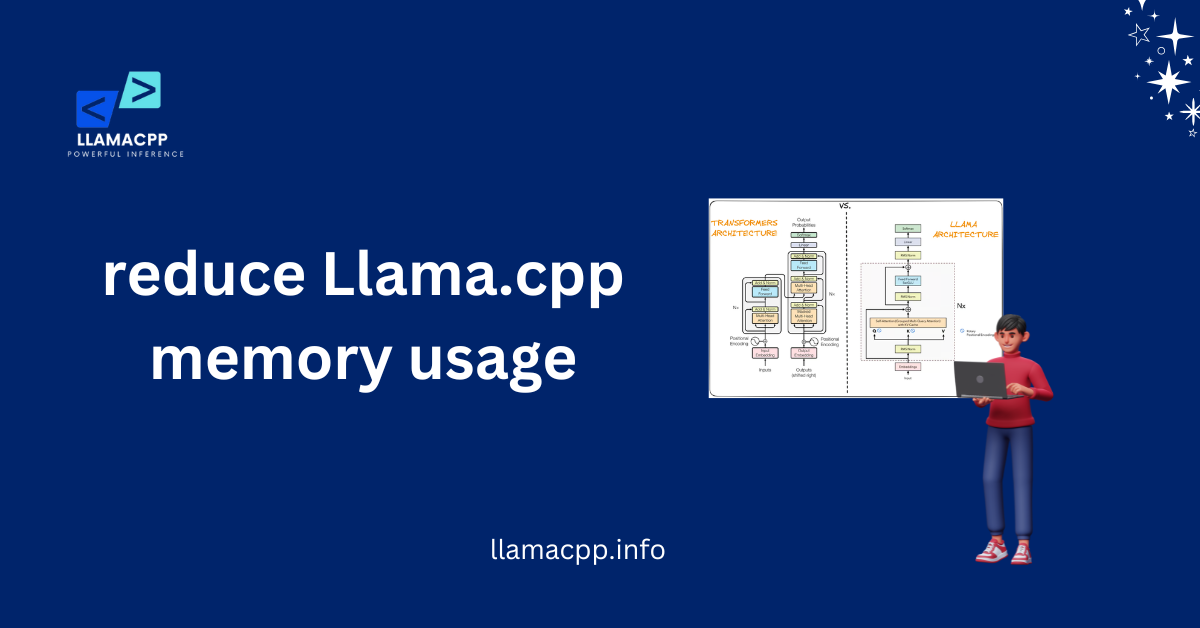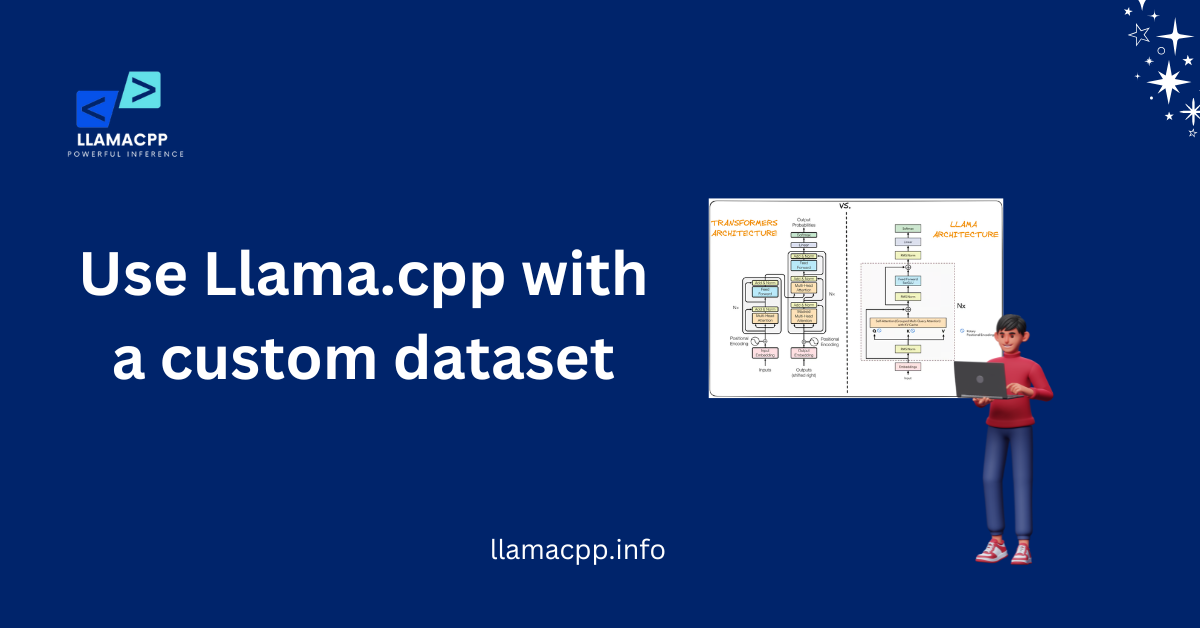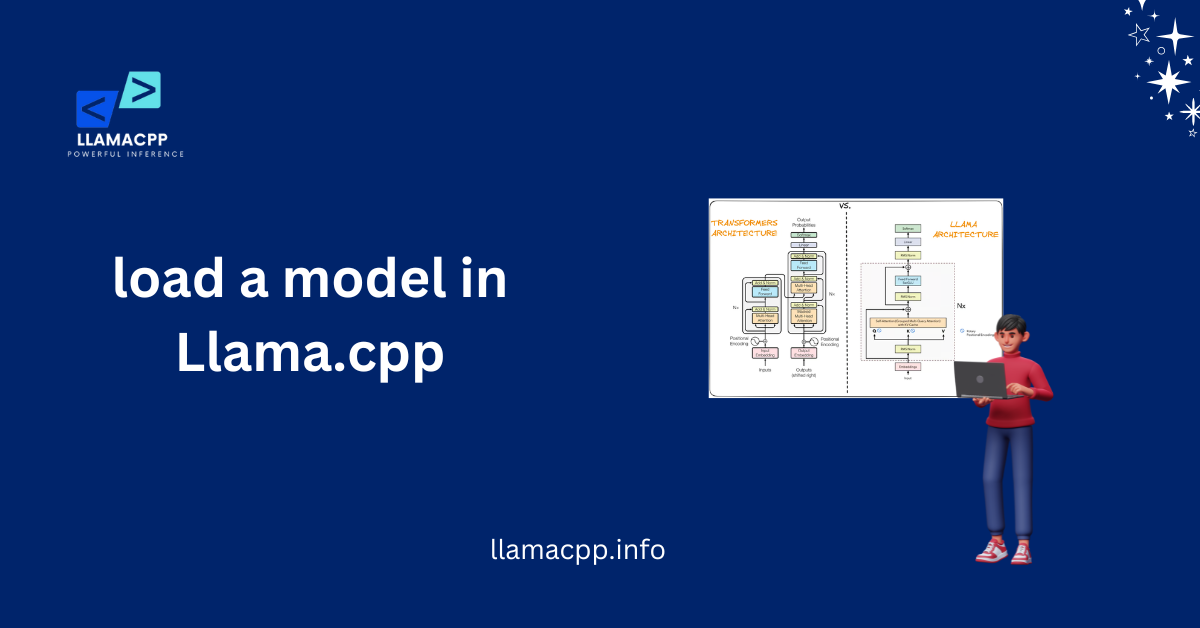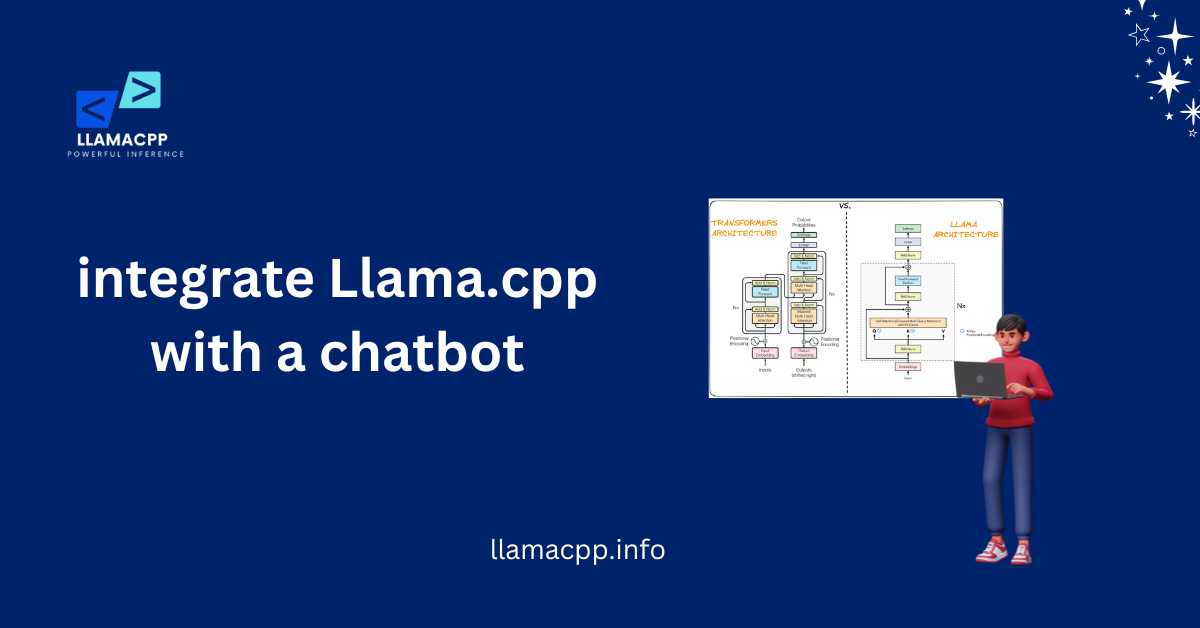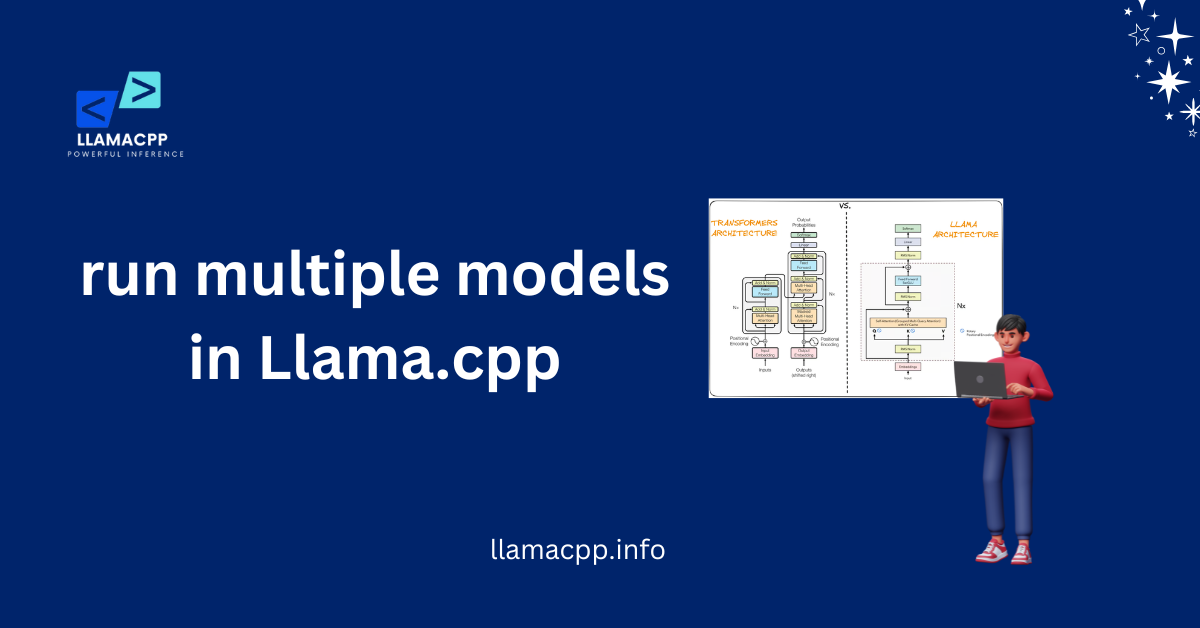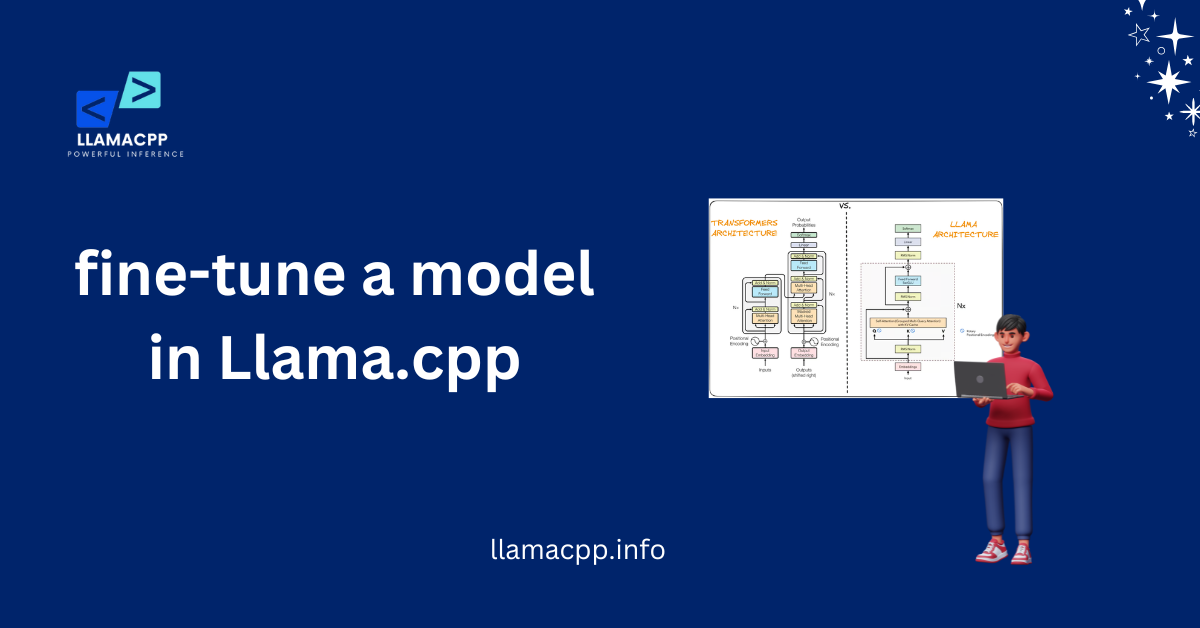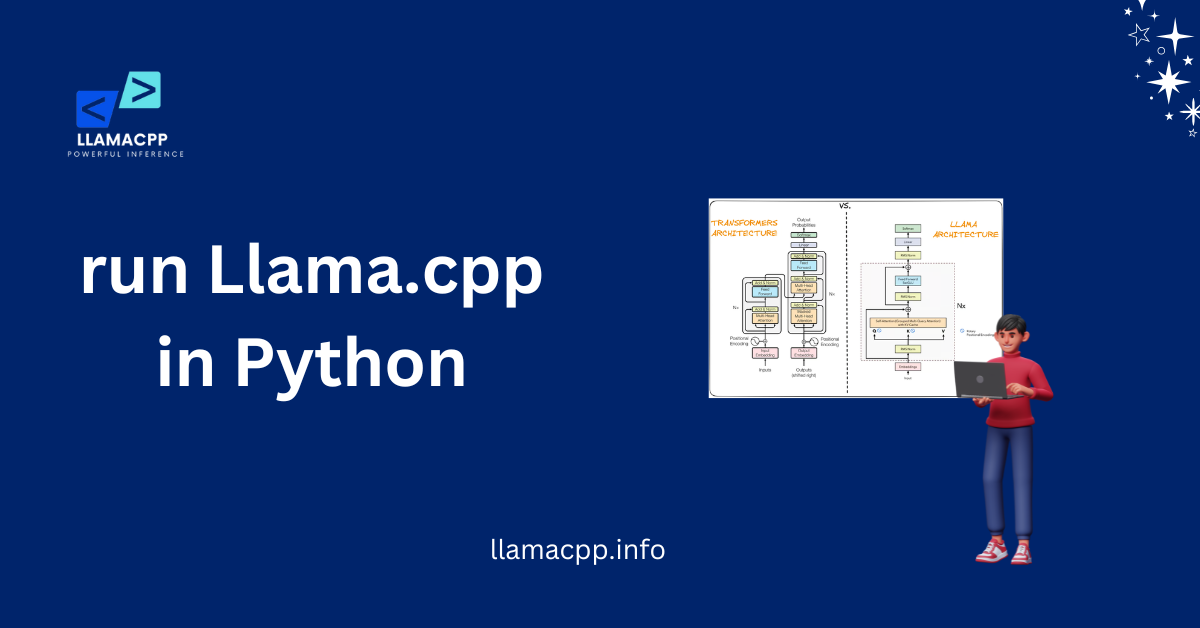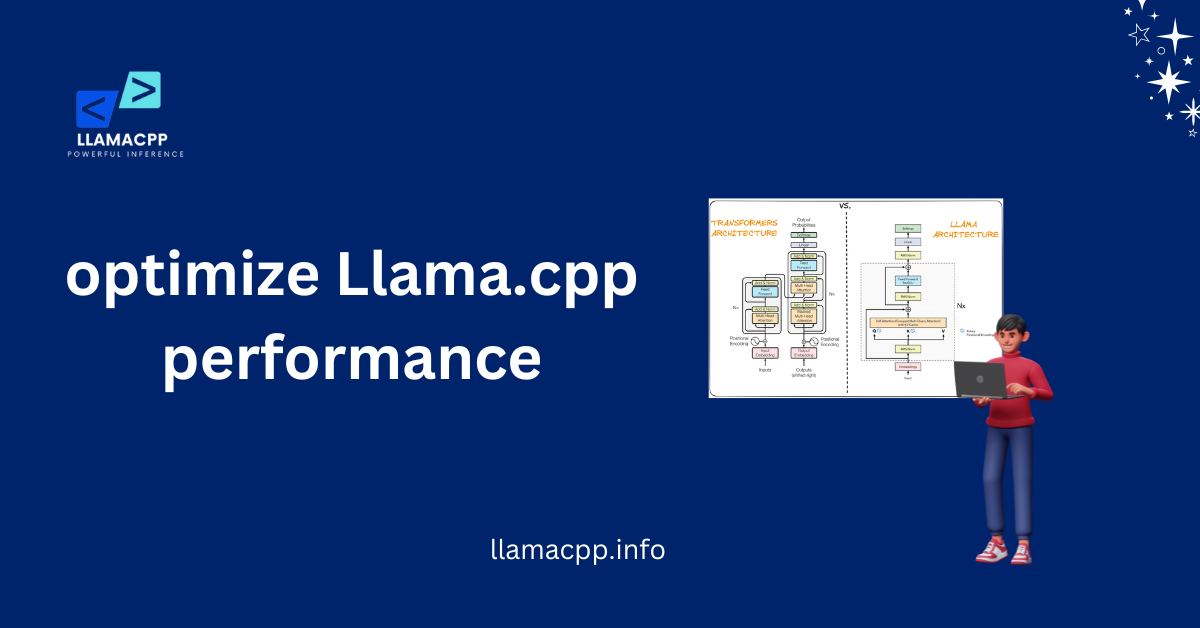Table of Contents
ToggleIntroduction:
Llama.cpp vs other AI frameworks is an important question when choosing the right tool for your AI project. People use many frameworks out there, like TensorFlow and PyTorch. But Llama.cpp is quickly gaining attention because of its simplicity and power. It’s lightweight and efficient, making it an excellent option for developers who want to build fast and scalable AI models. The best part? You don’t need to be an expert to start using it.
Choosing the proper framework can be challenging. It can affect your project’s success and how easily you can make changes or improvements in the future. While other AI frameworks are widely used, Llama.cpp is a solid choice because it balances performance with ease of use. Let’s explore why Llama.cpp might be the perfect fit for your next AI project and how it compares to others!
Why Llama.cpp is Gaining Popularity
Many developers are asking about Llama. Cpp vs. other AI frameworks. More and more people are choosing Llama.cpp because it is simple and efficient. It works faster than many different frameworks. Unlike heavy frameworks that take up a lot of space, Llama.cpp is lightweight, making it ideal for devices with limited memory or storage.
What also makes Llama.cpp stand out is how easy it is to use. Many AI frameworks can be complex to learn, but Llama.cpp is different. It is simple and user-friendly. You don’t need to be an expert to get started. This simplicity makes it an excellent choice for beginners and veteran developers alike. Comparing Llama.cpp to other AI frameworks, it’s easy to see that Llama.cpp is a top contender in terms of simplicity and performance.
1. Lightweight and Efficient
Llama.cpp is well-liked due to the fact that it is resource-light. It doesn’t require a lot of memory or processing power. This is awesome for developers when they need models to execute with speed and fluency. Compared to other AI frameworks, such as Llama.cpp vs. TensorFlow, you can see that it occupies less disk space while yielding excellent performance. It’s a great option if you require a balance between speed and efficiency.
2. Simple to Use
Another reason Llama.cpp is so well-liked is that it’s easy to use. You don’t need to know complex coding to work with it. It’s designed to be simple. You can start using it right away without any hassle. When you compare Llama.cpp to other AI frameworks, it’s easy to see how this simplicity sets Llama.cpp apart from others that might require more setup and effort.
3. Great for Rapid Development
Llama.cpp helps developers build and test models quickly. This makes it an excellent tool for anyone who needs to work fast. Unlike other AI frameworks, Llama.cpp speeds up the development process. You can move from idea to testing in no time. If you need to get results fast, Llama.cpp on a low-end PC vs other AI frameworks shows that Llama.cpp is the better choice for quick development.

What Makes Llama. Cpp Stand Out in Performance
Developers often ask about Llama. Cpp vs. other AI frameworks to determine which AI tool works best. Llama.cpp stands out because it is fast and efficient. It runs quickly without needing a lot of resources, making it perfect for developers who need AI models that work fast but don’t want to slow down their systems. Compared to other frameworks, Llama.cpp provides excellent performance with fewer resources.
Another reason why Llama.cpp stands out in that it has a balance between speed and power. Comparison with other AI frameworks reveals that it is optimized to execute tasks at high speed. Despite the availability of limited resources, it performs optimally. It is an excellent option for any developer seeking a fast and dependable AI framework.
1. Speed and Efficiency
Llama.cpp is built to work fast. When compared to other AI frameworks, it is clear that Llama.cpp is quicker at processing tasks. It gets the job done in less time, which is excellent for developers working on tight deadlines. The framework is lightweight, so it runs fast without using too much memory.
2. Low Resource Usage
Llama.cpp doesn’t need a lot of resources to work. It uses less memory and processing power than other frameworks, which makes it more efficient. While other AI tools may slow down a system by using a lot of resources, Llama.cpp vs. other AI frameworks shows that Llama.cpp runs smoothly even on systems with fewer resources.
3. Scalability
Llama.cpp works well with both small and large projects. It can grow as your project grows. Llama.cpp vs other AI frameworks shows that it adapts to different project sizes without losing its power. Developers love that they can use Llama.cpp for small models or more complex ones, and it will still perform well.
How Llama.cpp Simplifies AI Development
Llama.cpp vs other AI frameworks often comes up when developers want to know which framework is easier to use. Llama.cpp stands out because it is simple and easy to understand. It has a straightforward design that makes it accessible, even for beginners. You don’t need to be an expert to get started with Llama.cpp. Compared to other AI frameworks, it reduces the complexity and helps you build models faster.
Llama.cpp also saves time by cutting down on setup and configuration. Many other frameworks require many complicated steps to get things running. But Llama.cpp vs. other AI frameworks shows that Llama.cpp makes the process much easier. Developers can focus more on building models and less on setup, which makes AI development more efficient and enjoyable.
1. Easy to Learn
Llama.cpp is designed to be easy to learn. Even if you are new to AI, you can start using it without much difficulty. Llama.cpp vs other AI frameworks shows that Llama.cpp is much simpler, allowing beginners to jump in and create their own AI models. The clear instructions and simple code make it an excellent choice for newcomers to the field.
2. Quick Setup
With Llama.cpp, you don’t waste time setting things up. It requires minimal configuration, so you can get straight to building your models. When comparing Llama.cpp vs other AI frameworks, increase inference speed in Llama.cpp wins for its quick setup and simple installation. Developers don’t need to spend hours trying to make things work – they can begin developing immediately.
3. Less Code, More Results
Another manner in which Llama.cpp makes AI development easier is by minimizing the amount of code required. With fewer lines of code, developers can achieve the same results. This makes building models faster and more efficient. Llama.cpp vs other AI frameworks shows that Llama.cpp helps you achieve your AI goals with less effort, making it easier to develop powerful models without getting bogged down by long coding sessions.
Llama.cpp vs. Other Popular AI Frameworks
Llama.cpp vs other AI frameworks is a question many developers ask when choosing the right tool. Llama.cpp stands out because it is simple and fast. Unlike other complicated AI frameworks, Llama.cpp is easy to use. It helps developers save time and get things done faster. When we compare Llama.cpp vs other AI frameworks, Llama.cpp is often the better choice for those who want a lightweight and quick solution.
While some AI frameworks are resource-intensive and resource-hungry, Llama.cpp is not. It has been made as simple and light as possible. A comparison of Llama. Cpp with other AI frameworks indicates that it has only what you require without throwing in the extra baggage. Regardless of whether you are a newcomer or a seasoned developer, run multiple models in Llama.cpp makes developing AI more straightforward.
1. Lightweight and Fast
Llama.cpp is light and fast, which makes it stand out from other AI frameworks. It doesn’t use up too many resources, which means it runs quickly without slowing down your system. Llama.cpp vs. other AI frameworks shows that it performs tasks faster and with fewer resources, making it a great choice for developers who want speed and efficiency.
2. Easy to Use
Llama.cpp is very easy to use. Many AI frameworks can be tricky and complicated to understand. Comparing Llama. Cpp to other AI frameworks highlights how simple and beginner-friendly it is. Developers can quickly learn how to use it and start building AI models without struggling with complicated setups or confusing code.
3. Flexible for Different Projects
Llama.cpp works well for all types of projects, whether big or small. It can handle simple models as well as complex ones. Llama.cpp vs other AI frameworks shows that it is flexible and adapts to different needs. Whether you are working on a small app or an extensive AI system, Llama.cpp gives you the tools to succeed.
Use Cases: Where Llama.cpp Works Best
Many developers discuss Llama. Cpp vs. other AI frameworks when choosing the right tool for their project. Llama.cpp stands out in several areas. It’s a good fit for both small and large projects. Whether you aLlama.cpp vs other AI frameworksLlama.cpp vs other AI frameworksre developing a mobile app or building a real-time AI system, Llama.cpp vs. other AI frameworks shows that Llama.cpp balances power and simplicity. It is a fast and efficient framework that developers can use to create amazing AI solutions.
Llama.cpp works best in use cases where speed and resource efficiency are essential. Llama.cpp vs other AI frameworks shows that its lightweight nature makes it ideal for mobile applications and edge computing. It can handle real-time AI tasks and process data quickly. Developers can use Llama.cpp for a variety of functions without the burden of complicated setup or slow performance.
1. Mobile Applications
Llama.cpp is perfect for mobile apps, which usually have limited power and resources. Comparing Llama. Cpp to other AI frameworks shows that it is lightweight and runs smoothly on mobile devices. It helps developers create AI-driven mobile apps that work well without slowing down the device. Whether it’s for image recognition or voice commands, Llama.cpp makes AI easy for mobile developers.
2. Edge Computing
Llama.cpp is ideal for edge computing. It allows devices to process data locally, reducing the need to send everything to the cloud. Comparing Llama. Cpp to other AI frameworks shows that this feature is perfect for IoT devices and innovative technology. Llama.cpp makes devices smarter and quicker by doing AI work locally rather than depending too heavily on the cloud.
3. Real-Time AI Systems
Llama.cpp is excellent for real-time AI applications. Its lightness enables it to process data in a timely manner. A comparison of Llama.cpp is free to use, along with other AI frameworks, reveals that it is ideal for applications such as live video analysis or real-time recommendations. It provides fast responses, making it an excellent choice for real-time AI applications that require instant results.
Challenges with Llama.cpp
While Llama.cpp has many advantages over other AI frameworks, it does come with some challenges. One challenge is that Llama.cpp might not have as many features as other larger frameworks. It is simple and fast, but for complex tasks, it may not always be the best choice. Some developers may find it limiting for more advanced projects. However, its simplicity can also be an advantage for smaller or more straightforward tasks.
Another challenge is the more minor community support. Llama.cpp vs other AI frameworks shows that more popular frameworks like TensorFlow and PyTorch have large communities that offer tons of help and resources. Llama.cpp, being newer, doesn’t have as much support. This can make finding solutions to problems harder for developers who need help.
1. Limited Features for Complex Projects
Llama.cpp is excellent for simple projects but may not have enough features for complex ones. Llama.cpp vs other AI frameworks shows that big frameworks like TensorFlow or PyTorch have lots of tools ready to use. Llama.cpp might need extra work to support more advanced features. This could be a problem for developers who need more power and flexibility.
2. Smaller Community and Support
Llama.cpp doesn’t have a community that is as large as other AI frameworks. Llama.cpp vs other AI frameworks highlights that TensorFlow has a vast online community with many tutorials and resources. Llama.cpp has fewer people working with it, which means less support when you run into issues. This can be a challenge for new users who need extra help.
3. Limited Documentation
Llama. CPP has less documentation than other AI frameworks. Comparing it to other popular frameworks shows that other popular frameworks have detailed guides and plenty of examples. However, Llama. CPP’s documentation can be hard to follow, especially for advanced users. Developers may need to figure things out on their own, which could slow down their progress.
Conclusion
Llama.cpp vs other AI frameworks is an excellent choice for developers who need speed and simplicity. It is fast and easy to use, making it perfect for small projects. While it may not have as many features as more prominent frameworks, its lightweight design is a big plus for specific tasks.
Although Llama. CPP has some challenges, like fewer features for complex projects and less community support, but it is still a strong option. As the framework grows, it could become even better. For those who want a simple, fast, and efficient AI solution, Llama. CPP is a great tool to consider.
FAQs
1. What is Llama.cpp?
Llama.cpp is a simple, fast AI framework for building machine learning models. It is lightweight and easy to use, making it great for smaller projects.
2. How does Llama? Cpp, compared to other AI frameworks?
Llama.cpp vs. other AI frameworks shows that while Llama. CPP is lightweight and fast; it may not have as many features as bigger frameworks like TensorFlow or PyTorch.
3. Can Llama.cpp be used for complex AI projects?
Llama.cpp is best for smaller projects. For very complex tasks, other frameworks may be a better choice because they offer more features.
4. Is Llama.cpp good for beginners?
Yes, Llama. Cpp is easy to understand and use, making it a good choice for those new to AI development.
5. Does Llama.cpp have a large community?
No, Llama.cpp has a smaller community than other popular frameworks like TensorFlow, which means there may be fewer resources and support available.









